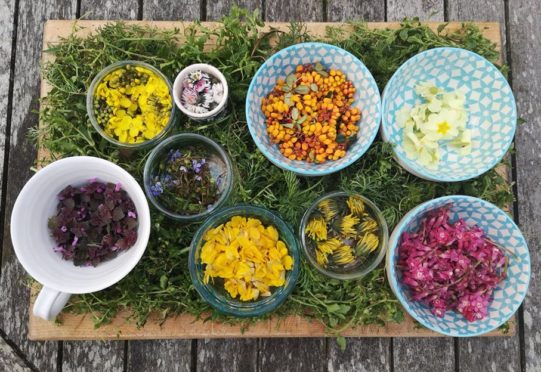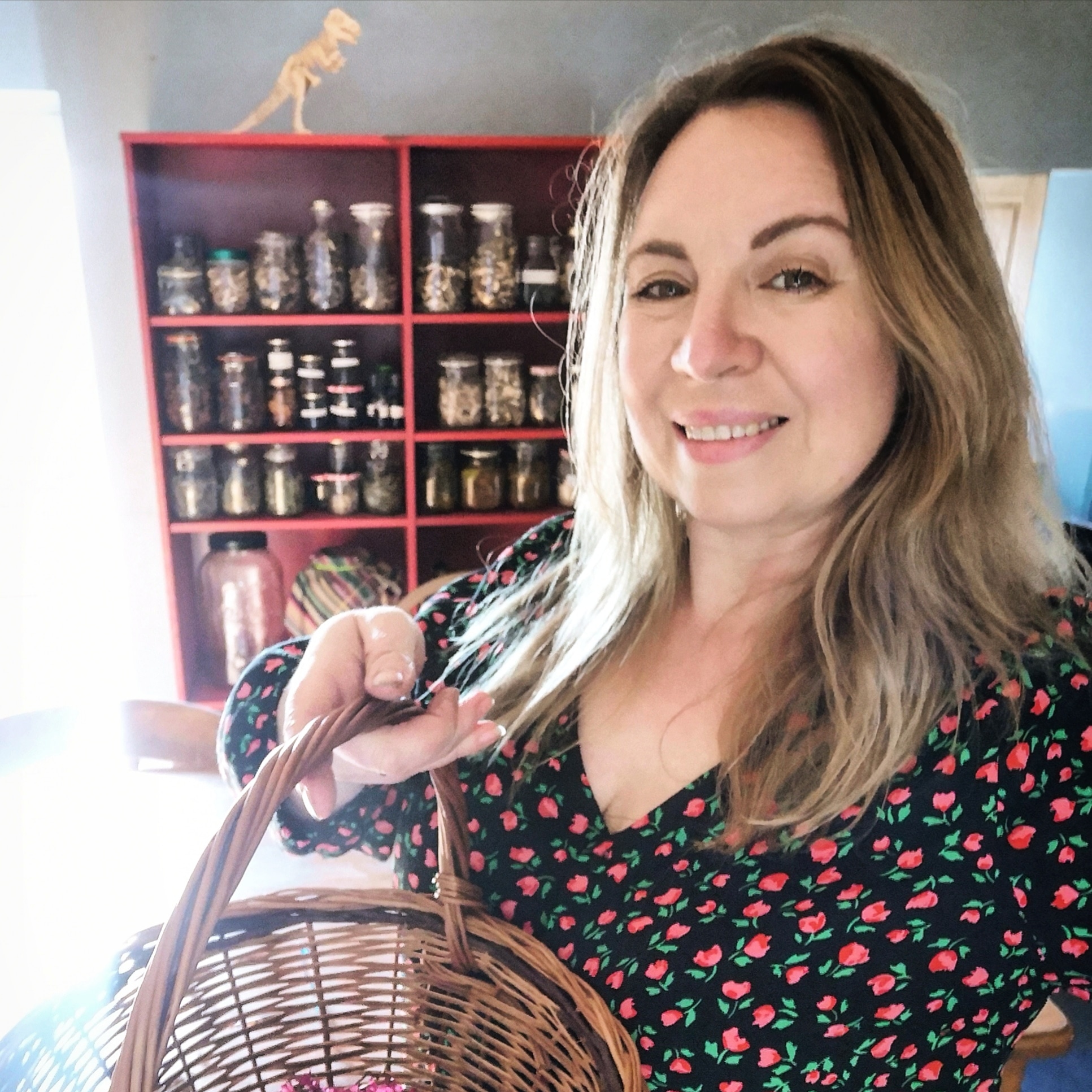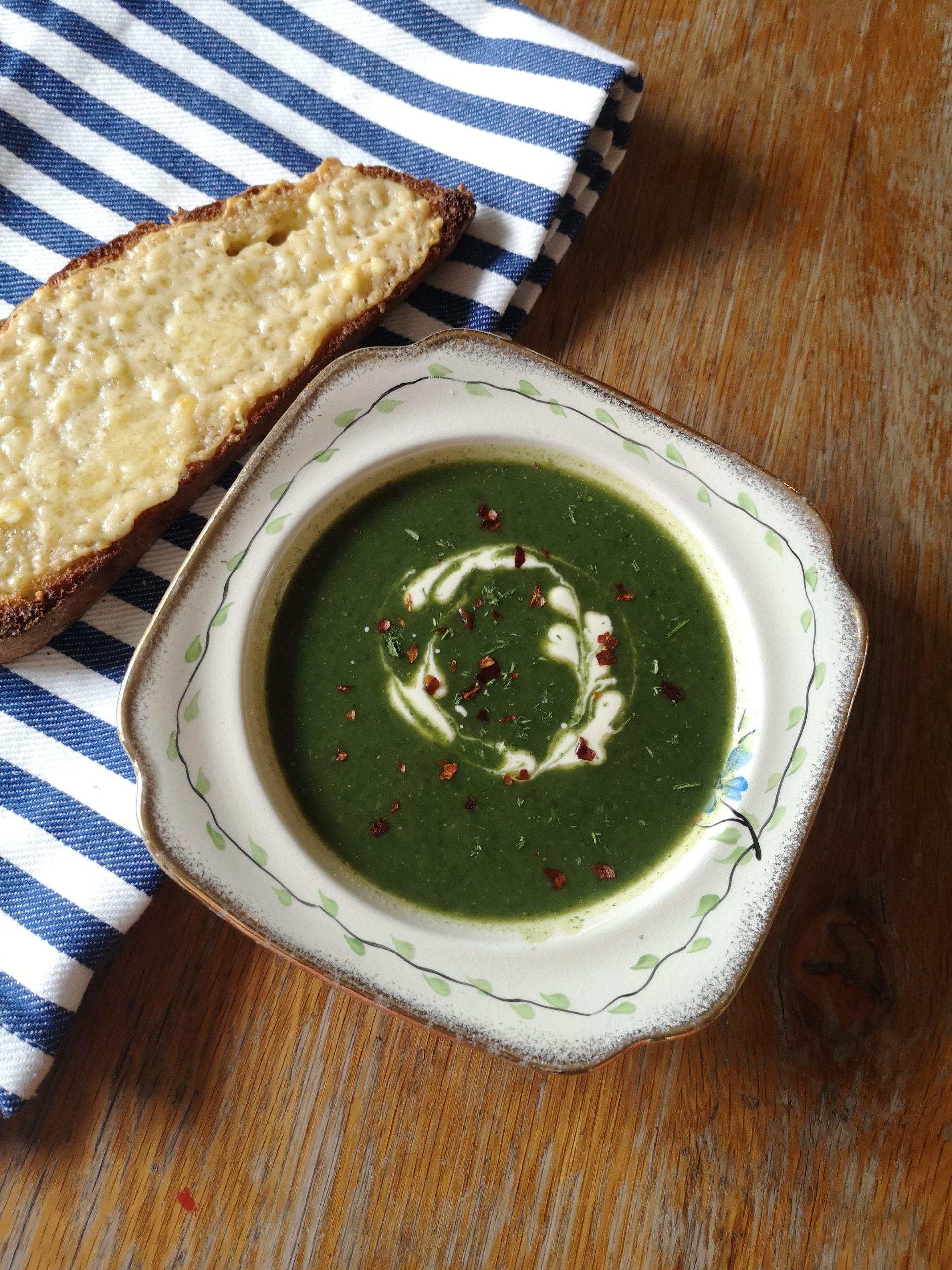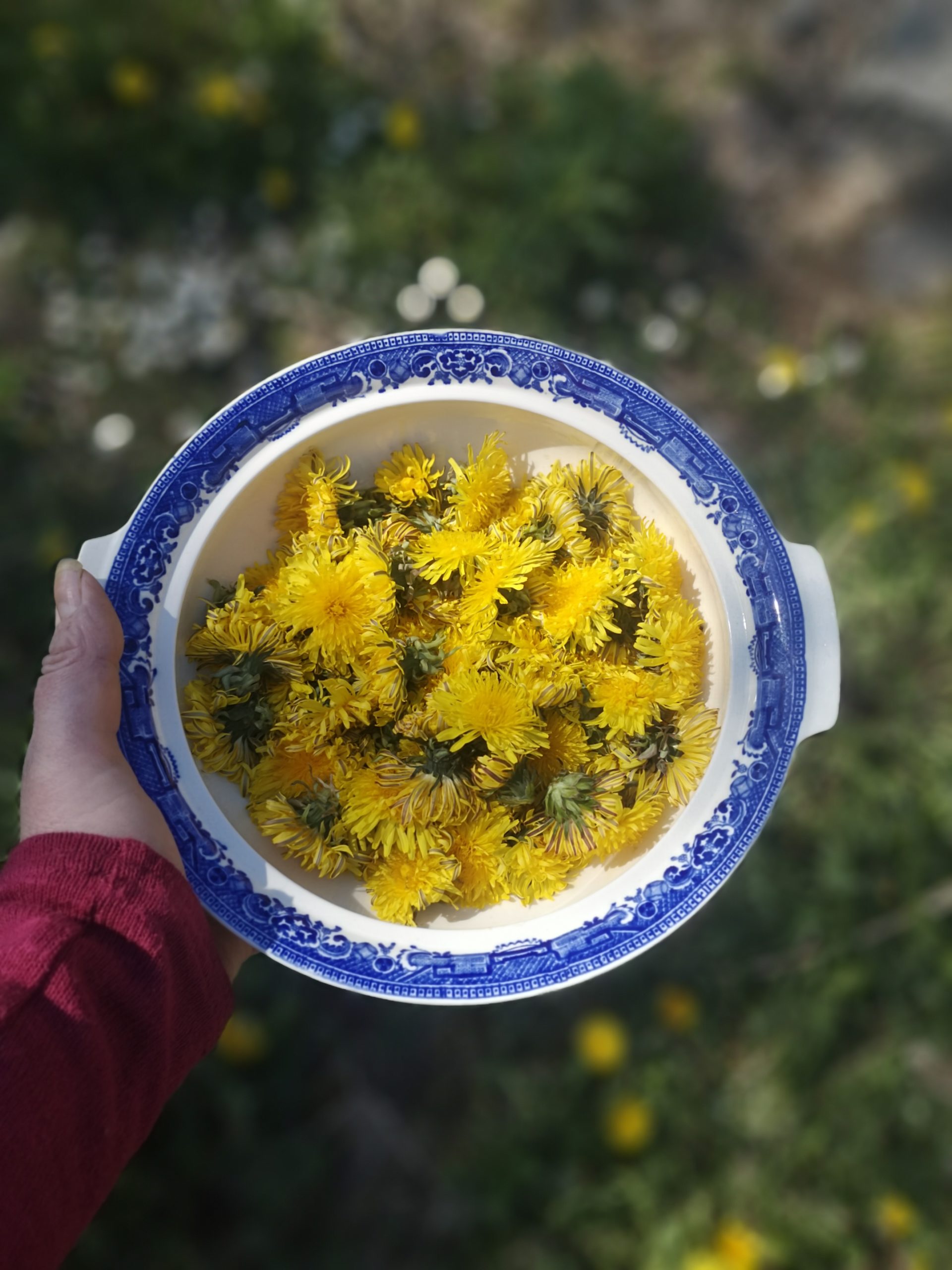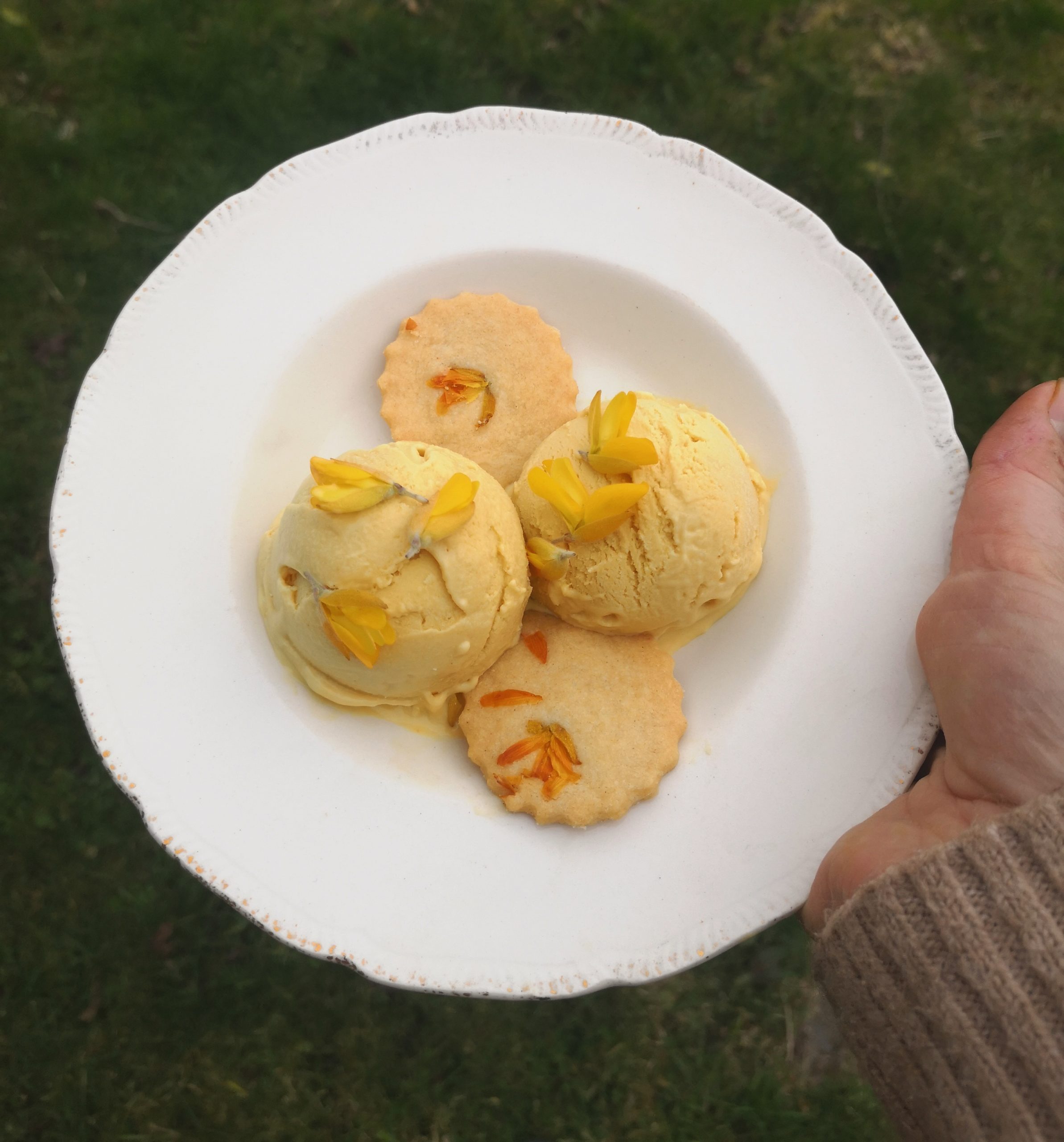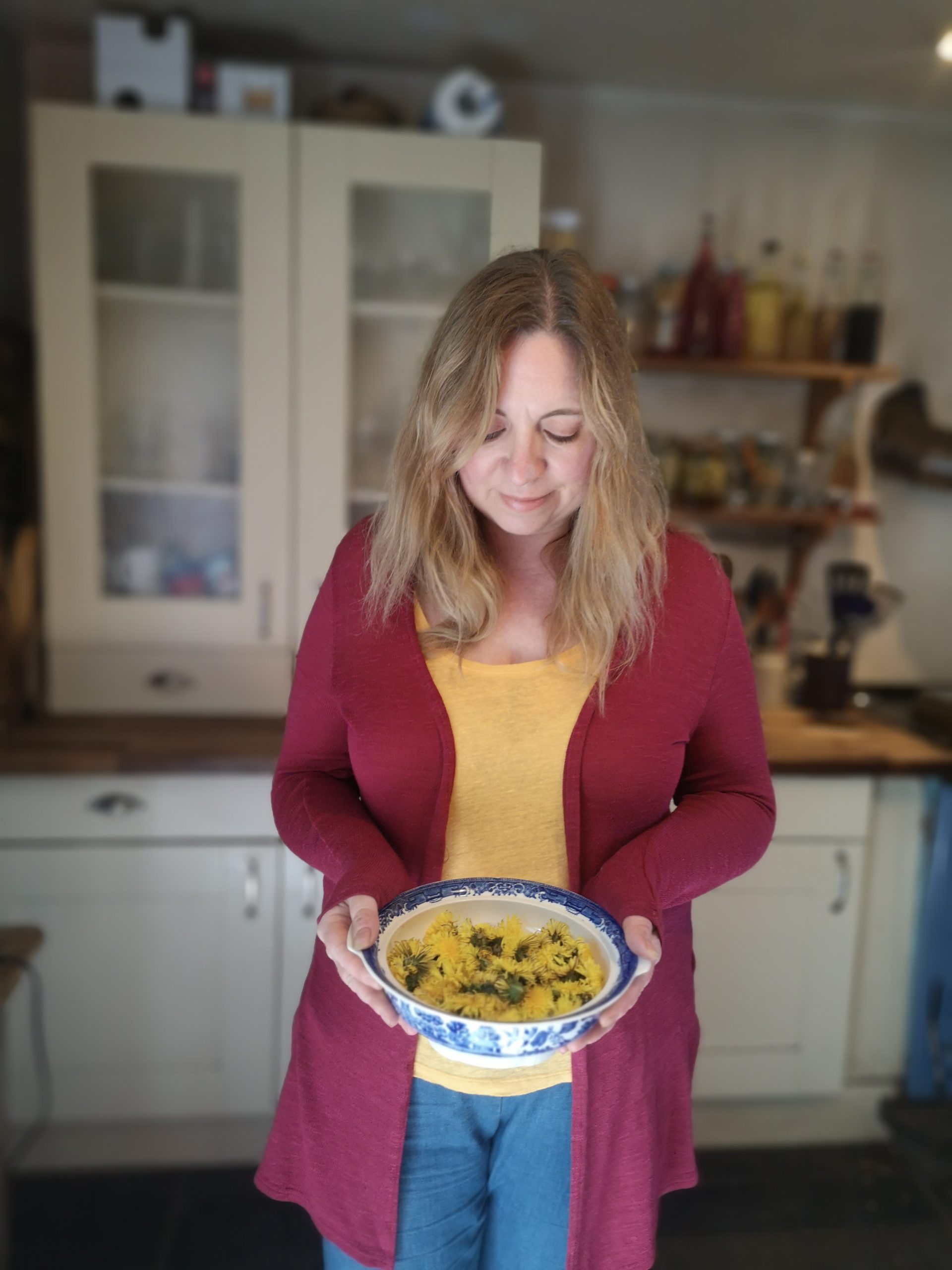Julia Bryce caught up with local forager Leanne Townsend to find out what is in season just now and how to pick it safely.
May is a month full of promise. Spring is in full swing and thoughts of summer are slowly creeping in with the warmer weather destined to be on its way.
Like the seasons, plants too are also seasonal, with some only blossoming once a year, while others flourish all year round.
With summer on the horizon, more and more people will be heading out on their daily walks, keeping an eye out for edible plants they can forage and make into a variety of things.
From butters to shrubs, not to mention vinaigrettes, honey and soups, there are plenty of uses for numerous plants.
Leanne Townsend, who runs Aberdeenshire foraging business Wild Food Stories, is just one of those outdoor educators keeping the public right when it comes to identifying safe foliage to eat.
Sharing her top tips and knowledge about some of the popular plants in season during May, Leanne will also advise how best to go around picking them.
Almost completely self-taught using foraging communities and books as the foundations to her expertise, Leanne has more than a decade’s experience in foraging.
And while picking your own food is great, both physically and mentally, Leanne discourages anyone with any doubt whatsoever about a plant, not to pick it.
Nettles
Nettles (urtica dioica) are in season between March and December in the north of Scotland.
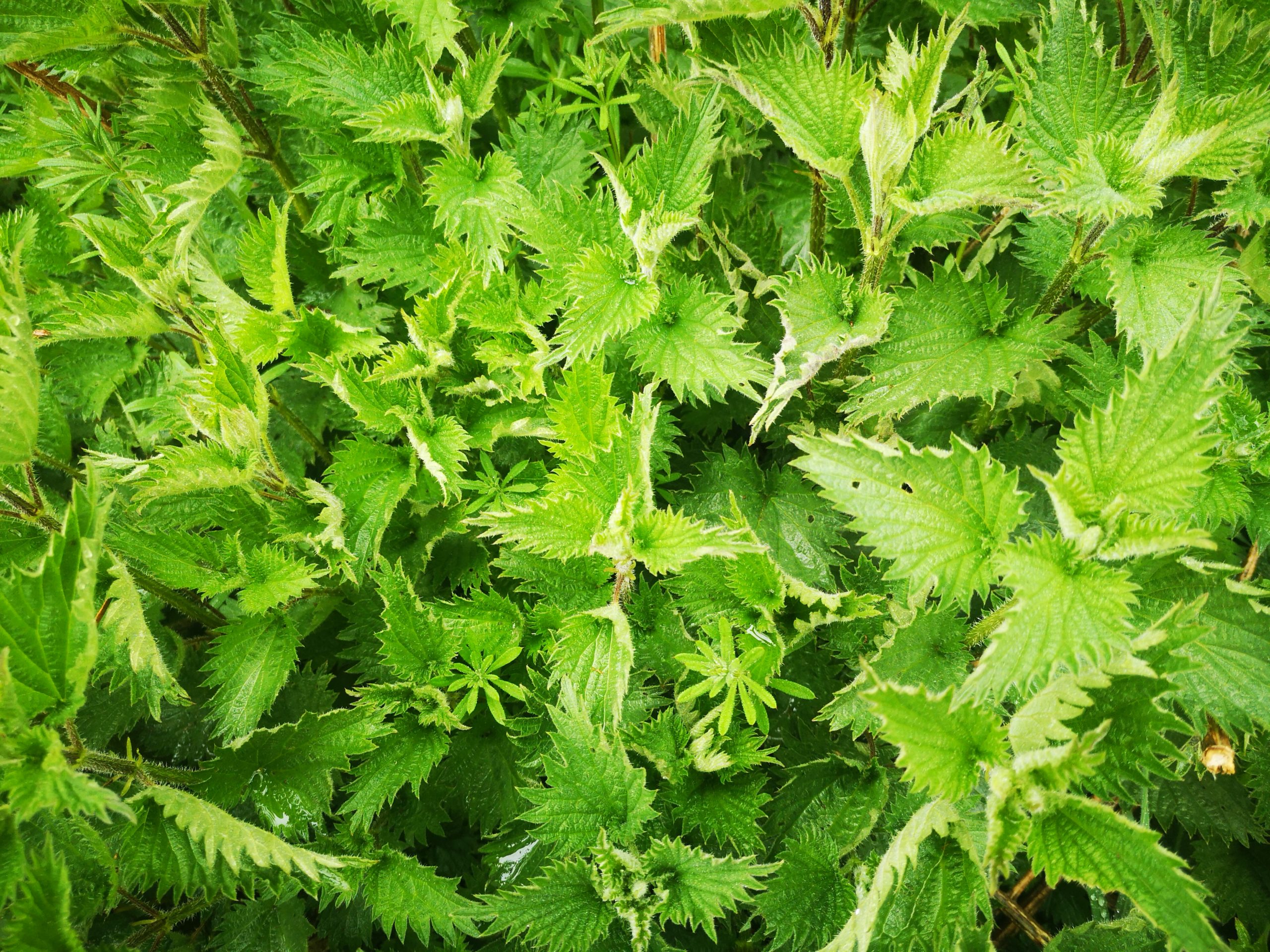
Can you tell us a bit about them?
Nettles are perhaps one of the best-known wild plants in the UK. Children of a young age quickly learn to identify nettles, once they have been stung a few times! Nettles are hugely abundant in Scotland, and can be found everywhere – you probably even have them growing in your garden.
They can also be found on waste and cultivated ground, hedgerows, parks and woodlands. Nettles have a long history of use in food. They are incredibly high in nutrients including iron, calcium and vitamins A and C.
How do you pick them safely?
Nettles are best harvested for food when they are fairly young. Once older, you can harvest the top three or so pairs of leaves as these will be the most tender and flavoursome. It is advisable to avoid harvesting nettles for food once they have flowered as they contain oxalate crystals which can irritate the urinary tract – though if the plants are cut back they will produce new shoots which you can harvest. Unless you’re very brave, it’s advisable to harvest nettle tops using gloves!
How would you advise people eat them? What can we make with them?
Nettles shouldn’t be eaten raw for obvious reasons, but cooking or dehydrating the leaves will remove the painful sting. Again, the use of gloves is advised when washing and preparing nettles for the pot.
They appear in many well-known traditional recipes including nettle soup and nettle beer. They can be used in much the same way you would use spinach, though they have their own delicious flavour.
I use them to make a cordial which can either be topped up with sparkling water or added to a delicious gin-based cocktail. I have also used them, finely chopped, in sourdough bread.
They can be wilted and used in a delicious pesto, or add them to curries, dahls, stews and stir fries. I also use them to replace the spinach in spanakopita (a spinach and feta filo pie). For something a little different, try finely chopping them and adding them to cakes, biscuits and oatcakes.
Dandelion
Dandelions (taraxacum officinale) are in season between March and November in the north of Scotland.
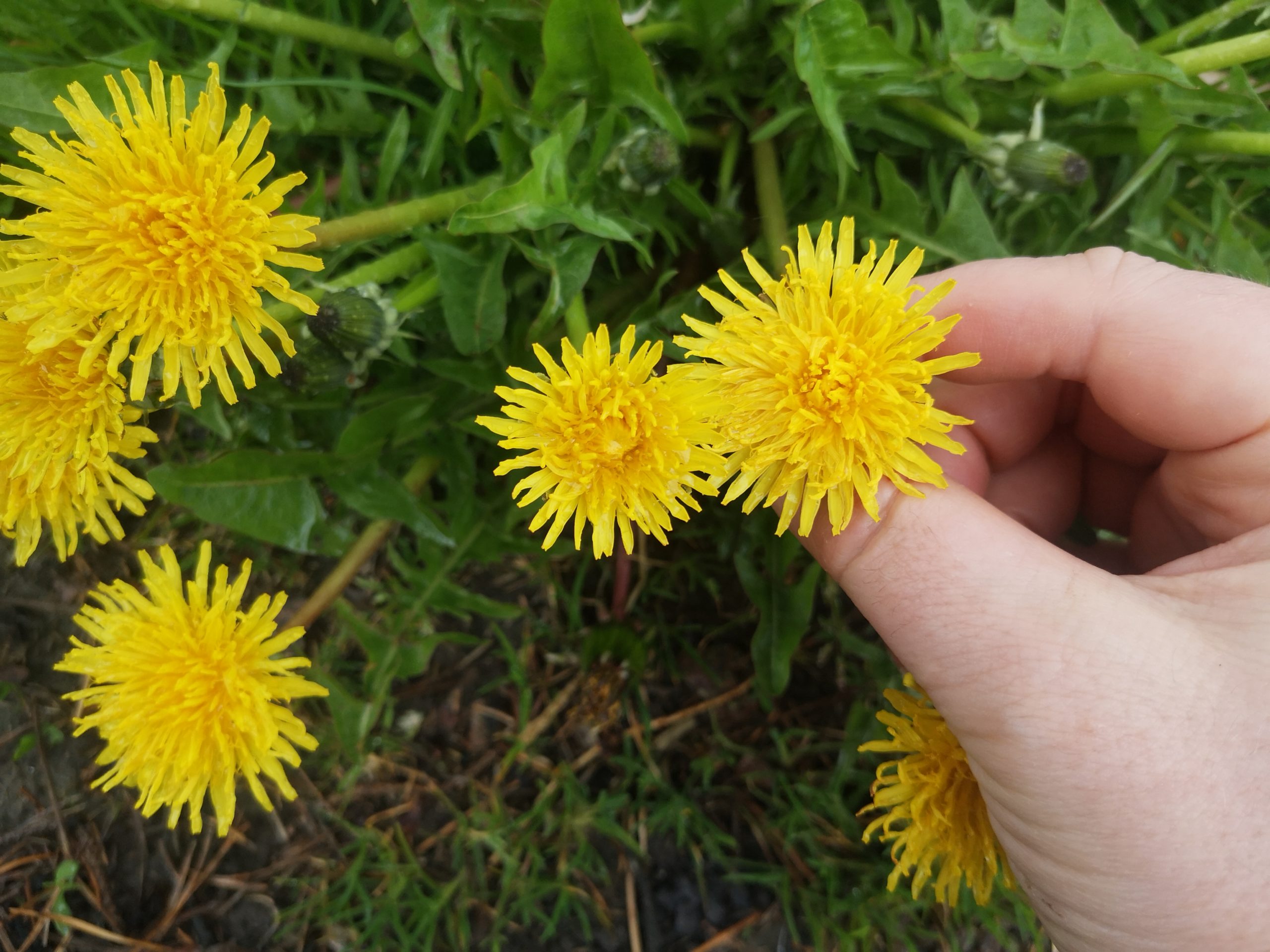
Can you tell us a bit about them?
Dandelions are a well-known “weed” in the UK and fill our green spaces with bright colour in spring and early summer. Traditionally, children have used the seed heads of the plant as “dandelion clocks”, counting the number of puffs it takes to blow the seeds away as the hour of the day. They are another very abundant plant, and easily identifiable – most people know them and there’s not much that can be confused with them.
They are most likely growing in your garden, too, or very close to your house on a roadside verge, in a hedgerow or in a local park. Dandelions are very nutritious and have been used in food and medicine throughout history.
How do you pick them safely?
They are easy to identify thanks to their long, slender and toothed leaves, and their bright yellow flowers which resemble a lion’s mane (though the name itself derives from the French for ‘lion’s tooth’ or ‘dent de lion’).
The flowers and younger leaves are best for harvesting – once mature, the leaves become tough and bitter. Flowers need to be harvested on a sunny day when they are fully open. The roots can be harvested throughout the growing season but beware – they are deep and strong!
Be careful in popular dog walking spots (dandelions are low-growing plants, after all) and harvest from spots which are a bit off the beaten trail.
How would you advise people eat them? Do they have to be cooked?
Flowers and younger dandelion leaves can be eaten raw, though slightly older leaves are better when cooked.
Young leaves are good either in a salad or added to pesto. They have a slightly bitter taste similar to rocket. Slightly older leaves are good added to soups and stews, or steamed and served with a soy and sesame dressing.
The petals can be removed from the flower heads to use either raw (on salads and as a garnish) or added to cakes and biscuits.
The flowers also make a great vegan alternative to honey when cooked into a rich syrup. Traditionally the flowers have been used to make dandelion wine. A cordial made with the flowers makes a refreshing summer drink topped up with sparkling water, ice and lemon slices. The roots have been used traditionally to make a coffee substitute.
Gorse
Gorse (ulex europaeus) is in season all year round.
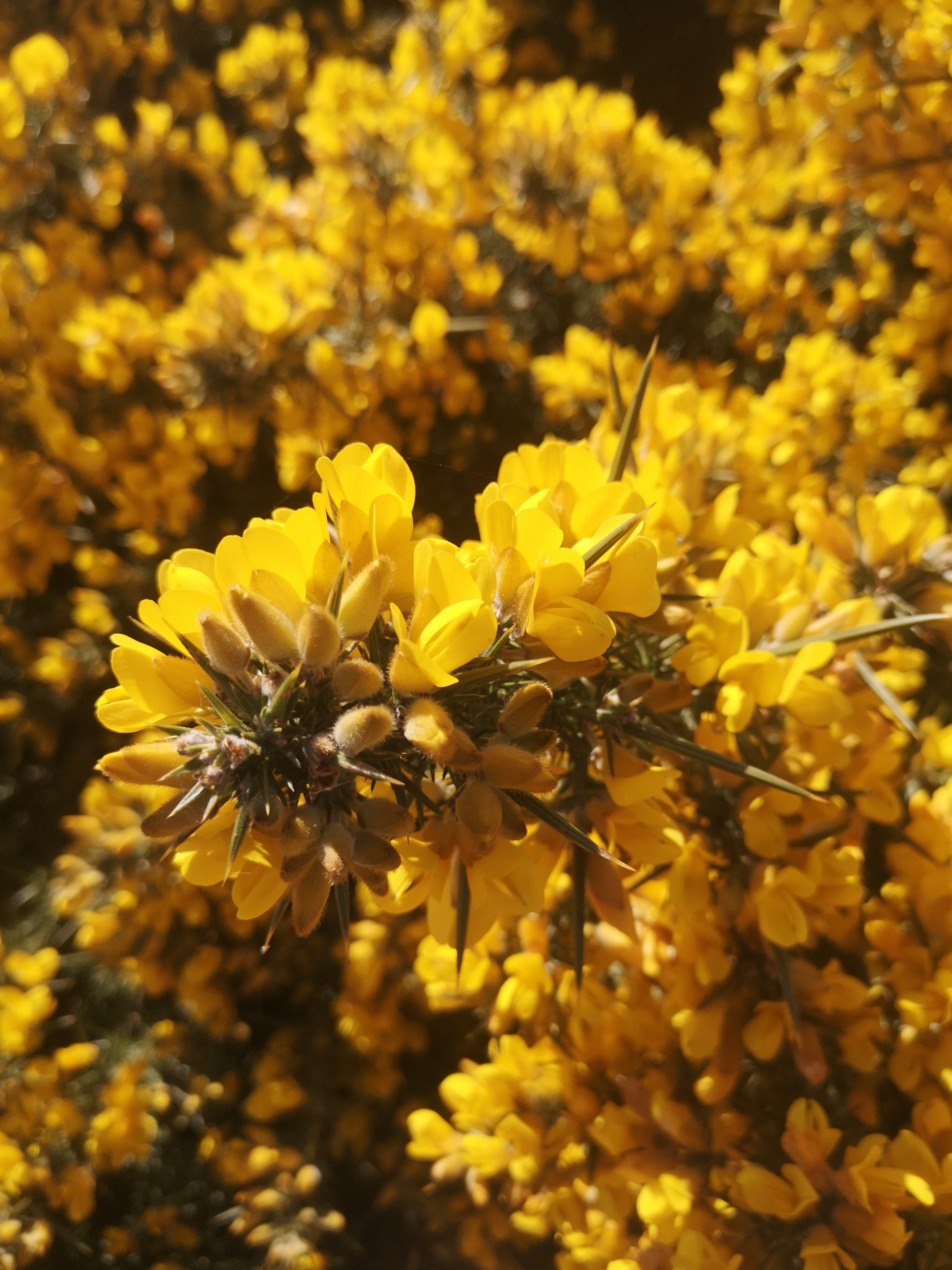
Can you tell us a bit about it?
Gorse is an edible member of the pea family. Known in Scotland as “furze” or “whin”, its main flowering season is during spring and early summer, but it’s pretty much always possible to find gorse in flower somewhere, hence the popular saying “when the gorse is out of bloom, kissing is out of fashion!”.
Its bright yellow blooms can really dominate the Scottish countryside and coastal paths – it is a hardy shrub which loves rough, poor, acidic soil and can be found growing in grassy places not far from the edges of urban areas.
How do you pick it safely?
It’s important to know that only the flowers of gorse are considered edible – and not in very large quantities. The seed pods should never be eaten. As with some other members of the pea family, gorse contains toxins, but only in small amounts, and it is not harmful in small quantities.
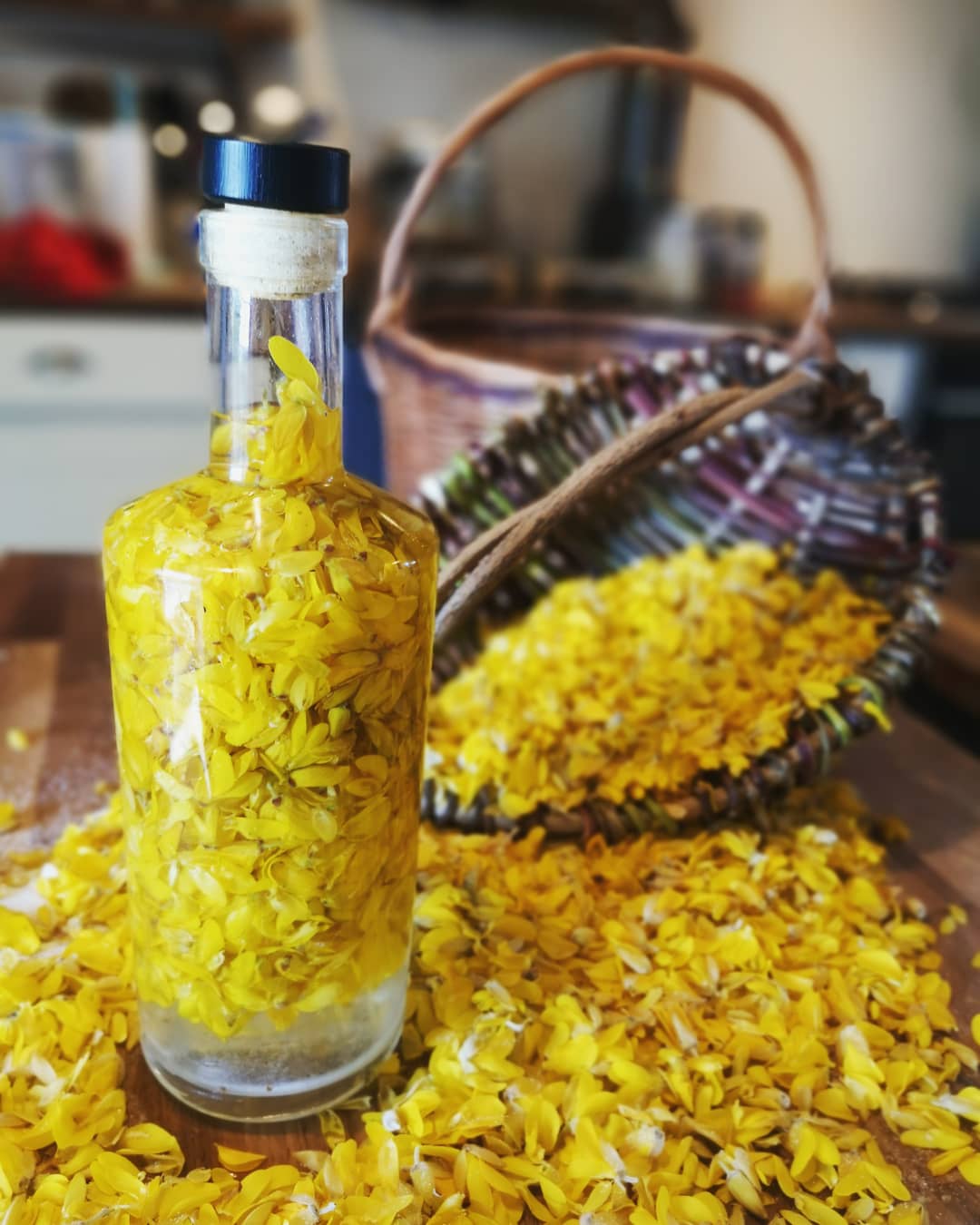
It should not be confused with broom which contains higher amounts of toxins (easy to distinguish, because broom does not have the painful thorns). Picking can be a painful affair if not done slowly and carefully, but gloves can make the work more clumsy, so just use your bare hands and take your time.
How would you advise people eat them? Do they have to be cooked?
Gorse flowers can be eaten raw or cooked (but not in large quantities). They have a taste somewhere between coconut and pea (you might have experienced that tropical coconut smell when walking among gorse on a sunny day – in fact, the flowers will be sweeter and tastier when harvested in sunlight).
This flavour makes them an excellent garnish on Asian dishes such as Thai curries, and they add a nice flavour and colour to salads. The flowers can be infused into cordial. I also infuse them into white rum with sugar to make a tropical coconutty liqueur.
A favourite annual recipe is gorse ice cream – the flavour really shines in cream-based desserts.
Common Sorrel
Common Sorrel (rumex acetosa) is in season year-round.
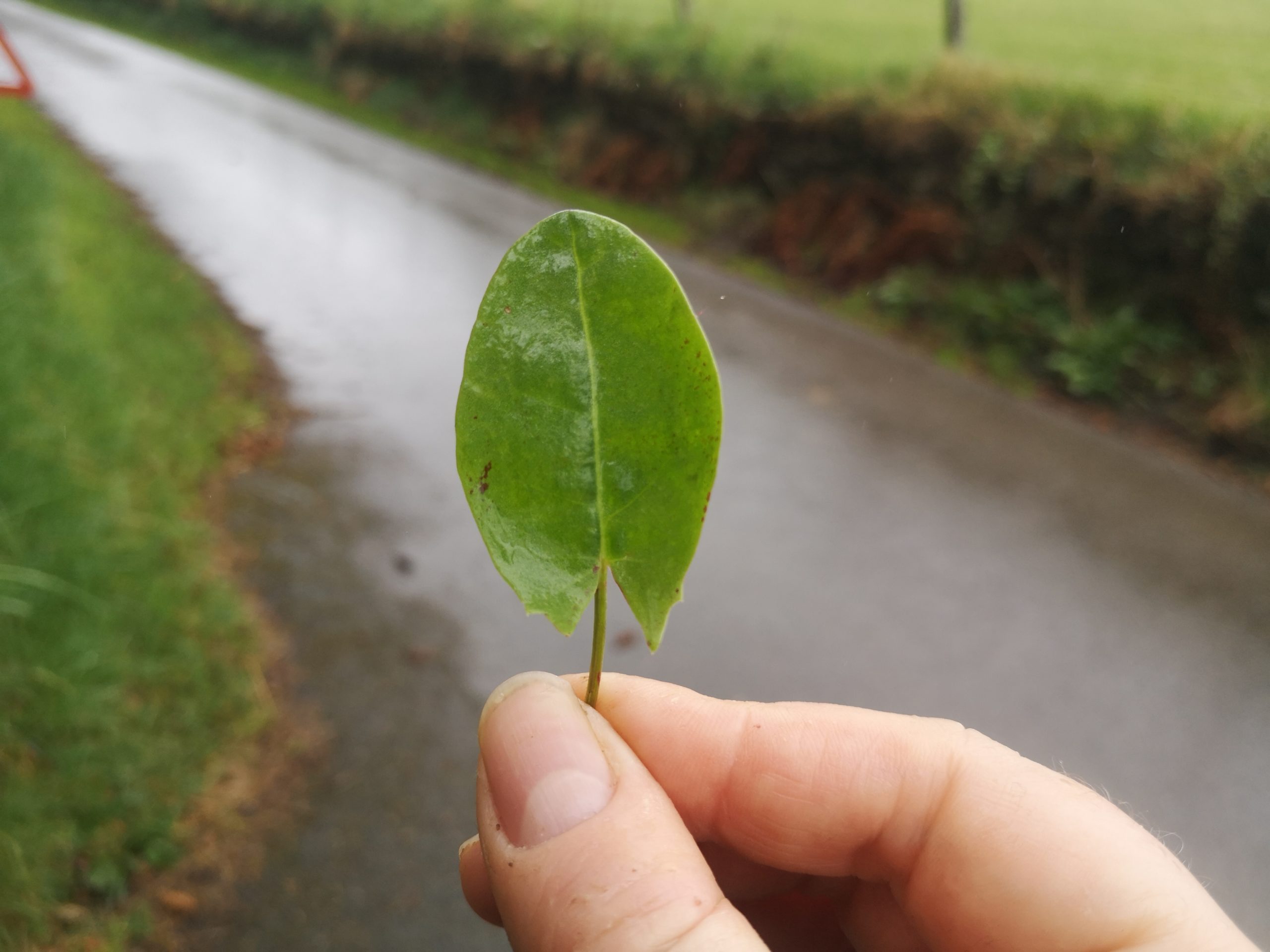
Can you tell me a bit about it?
Sorrel is an abundant plant which can be found growing in all manner of grassy environments, including verges, hedgerows, woodland edges, meadows, parks and on lawns and playing fields. It is a popular wild edible with a taste that is lemony and sharp – the name derives from the French for “sour”.
Sorrel is sometimes cultivated as a salad vegetable, though it is so abundant and easy to find that it is not necessary to do so.
How do you pick it safely?
Sorrel is one of the easiest wild plants to identify and one that I regularly teach on my courses. When young it has oval leaves, older leaves become longer and more pointed. It always has tails where the leaf meets the stem. These tails will be pointed at their ends, unlike the tails on toxic Lords and Ladies (Arum maculatum) which have rounded tails. It’s best to harvest the leaves before they flower.
How would you advise people eat them? Do they have to be cooked?
The leaves of sorrel can be eaten both cooked and raw. Much like spinach and rhubarb it contains oxalic acid so avoid eating it in very large quantities (though it would be very time consuming to gather enough leaves for this to be a problem).
Young leaves are good either in salads, pesto, and in dips and houmous. They taste sharp and citrussy and are one of the most popular wild nibbles on my courses.
Cooked, the leaves work wonderfully in a sauce for fish, or creamed (as you would spinach) as a side vegetable. They can also be used in a number of sweet dishes including tarts and sorbet. Sorrel works well with dairy and is interesting added to ice cream.
A favourite use is adding the leaves to soup. I always use a handful of sorrel leaves in a wild salsa verde, and blended with yoghurt it makes a great dip for wild garlic mushrooms.
